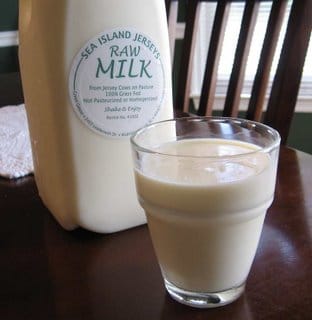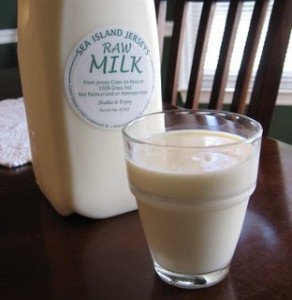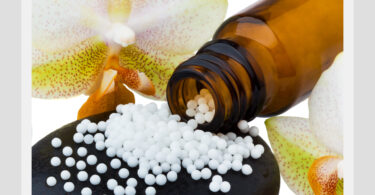Read by title before I.H.A., Bureau of Materia Medica, June 18, 1940.
Inherited tendencies are the gifts of the parents and are woven into the protoplasm, but the diet factor enters into the development of the individual from the very first feeding. During infancy and childhood structural diet problems take precedence over the maintenance and replacement foods required in later years, and during the early months milk is the important item of diet. When the mother s milk cannot provide for the child’s needs we must substitute the nearest similar, and cows milk in some from is the frequent alternative and often meets the need. It is usually later in life that cow’s milk becomes of questionable value in the diet. Burnett observes that “children who drink much after their teeth are grown become very liable to colds.” Some patients are so sensitive (or allergic, if you prefer that term) to dairy products that they cannot tolerate them in any form. All this leads us to a study of milk as a homoeopathic agent, with a brief preliminary glance at commercial milk production.

Another question to be considered is the free use of cow’s milk in the standard diets for tuberculous patients. Here we have a pathological condition having to do with exudations, copious mucous discharges and deposits in the tissues. We have observed that milk tends to increase the production of mucus. It has marked influence on the mouth, throat and upper respiratory tract, both in the natural and in the potentized states. Question: Do we help or hinder the pulmonary tuberculous patient by prescribing a milk diet?
In our study of the potentized milks we have analyzed and compared eight remedies: Lac vaccinum, Lac vaccinum butyraceum, Lac vaccinum defloratum, Lactic acid, Lactis vaccini flos, Saccharum lactis, Lac caninum, Lac felinum. There was no record available of the effect of goat milk, nor of the other types of milk run up by Swan in his experiments, such as the equorum, humanum, etc. The symptoms considered were both the proven and the pathogenetic, because of the scanty information on some forms.
Without any question, Lac caninum, has taken the lead in the development of symptoms, both in the number of symptoms produced and in their depth and violence of action. This may be partly due to the fact that Lac caninum has been more carefully and thoroughly proven than any other member of the group and its clinical application is of ancient origin. Cream (Lactis vaccini flos) produced the least number of symptoms, and no symptoms at all of the mind, head, eyes or ears have been recorded. Whole milk (Lac vaccinum) produces less symptoms than either skimmed milk (Lac vaccinum defloratum) or butter-milk (Lac vaccinum butyraceum). This might seem to indicate some natural balance between cream and the body of the milk, and that cream is able to modify or possibly antidote the symptoms produced by skimmed milk. All eight remedies produced symptoms, of the mouth, throat, urinary tract, female organs, upper respiratory tract, and in the lower limbs. We have seen that cream alone was exempt from mental symptoms. The mental picture of the rest of the group might be condensed into a composite picture as follows:
Marked depression, despondency, nervousness: fearful, apprehensive. Weakness if will; weakness of memory; mental confusion; laziness; hysteria; vacillation; confusions so marked they last for a long time after the proving (Lac vac.); fears and delusions to the point of insanity.
Lac. can. fears: disease , consumption, heart trouble; that she will be unable to perform her duties, of falling downstairs, to close her eyes because of snakes, cannot bear to be left alone. Lac fel. fears: falling down stairs. Sac. lac. has great fear of death especially during paroxysms of heart pains at night; is taken suddenly with fear, and trembling of whole body as from fright.
Lac caninum imagines that snakes are all around her, especially in the daytime, that they are in her bed, that she is a loathsome, horrible mass of diseases, that she is dirty, that she sees spiders, that if she cannot get out of her body in some way she will become crazy, that everything she says is a lie, that she is very short in stature morning and evening; that she is of no importance and is looked down on by all. Lac fel. imagines: that the corners of furniture or any pointed object near her is about to run into her eyes, even when she knows they are not too close. Lac vac. defl.: that all her friends will die and that she must go to convent. Sac. lac.: that it is only by a great effort she can keep herself together, that there is a large hole in her back just above the sacrum; that someone is behind her, that her mother wants to kill her.
Probably the most important symptoms in this group as being most characteristic of the milks, are the fears and delusions, and the marked listlessness which merges into definite laziness. Memory symptoms, depression and fear, while important symptoms, occur in many deep acting remedies, but few remedies have such marked laziness as Lactic acid and Sac. lac. All these remedies are cross, ugly, hateful, Lac can rages. cures and swears; Lactic acid and Sac. lac. also are outstandingly sarcastic and fault- finding, they cannot be pleased nor speak kindly to anyone.
There is marked vertigo with this group, but in Lac. can. and Lac. fel. we find a curious symptom: fear of falling downstairs without vertigo, although vertigo may occur apart from this symptom.
Lac. can., as we have said, is rich in mental symptoms, but these should be so well known to every homoeopathic physician we need not repeat them here. One symptom worth mentioning here, however, is that the patient cannot tell the truth-or when she believes fully that everything she says is a lie together with the alternating type of symptoms in other parts of the body, we may well study Lac caninum
All these remedies tend to the alternation of sides, especially in pains. The head pains are very acute, sharp, fiery, bursting heavy, usually confined to one rather small space or to one side, or in painful stripes; then these may leave the area first disturbed and appear in the corresponding area of the other side. Usually the left side suffers more severely, and there is the concomitance of rigidity of the neck. Buttermilk produces no sharp pains, but painful dullness, heaviness and throbbing, with the heat which usually accompanies the headaches, Lac caninums headaches are often associated with throat affections, the one location improving as the other becomes worse; terrible splitting pains in forehead on going into cold air; over eyes when sewing. Lac, vac., defl. has the alternation of the headache with tonsillitis, also, but here the headache usually occurs more frequently in anaemic women; and there is a definite relationship between the menstrual period, the throat symptoms and the headaches that should make us consider this remedy more frequently for menstrual headaches in patients who suffer from throat troubles. The headaches of Lac fel. are agonizing, with heat and pain spreading from the vertex down over the left face as a veil, or reversing, the symptoms may begin with coldness about the nose or ear, passing upward to the vertex.
Cream alone has no eye symptoms. The other members of the group have a wide variety of excessively painful eye symptoms and may well be indicated in many serious and stubborn eye conditions; or they may have the concomitance of severe and peculiar and pains. Lac fel. has a peculiar and valuable symptom in that its eye troubles come on in the fall. Clarke tells us that more than any other remedy Lac. can. > the deafness of hereditary syphilis. Lac. vac., Sac. lac. and Lac vac. all have the dullness of hearing, or at least the sensation as if the hearing would be dull.
Cows milk and cream, alone of this group, have no catarrhal manifestations in the nose. The other members of the group have mucous discharges, hard plugs. stopped coryza, and painfully sensitive pressure about the bridge of the nose and in the facial bones about the nose, indicating probable sinus involvement. Lac. fel. has a curious symptom in its exaggerated sense of smell for clams, of which she is usually very fond and which now is exceedingly disagreeable to her.
In Lac. can., Lac vac. defl. and Sac. lac. the face shows the profound action of the remedies by the great pallor, the sad, wretched, deathly look.
The mouth symptoms of Lac fel. bear a close resemblance to those of Mercurius viv. in the enlarged flabby tongue with serrated edges from the teeth and the excessive saliva. With the exception of cream, all this group has many mouth and teeth symptoms. There are many taste symptoms-metallic, burnt, salty, or the food tastes as if it lacked salt.
Every member of the group manifests throat symptoms: dryness of the fauces, sensation of a plug in the throat, difficulty in swallowing, choking sensation, rawness; and the alternation of sides, most notably in Lac caninum
It is homoeopathic history that Lac caninum was first introduced into this country by Reisig as a most effective weapon against the severe diphtheria epidemic then prevalent. At that time it proved itself the genus epidemicus, and this was clinical evidence of its homoeopathicity in many violent throat conditions.
Again excepting cream, this group has many symptoms of the appetite and stomach, manifesting generally much bloating after eating. There may be entire loss of appetite, or it becomes voracious; or there is desire to eat paper, as in Lac fel. There is marked thirst running through the group, a frequent concomitant of the diabetic. The nausea of pregnancy may be covered by some members of this group; and the marked exacerbation of all symptoms during the menstrual cycle or pregnancy gives this group of remedies greater importance in our armamentarium. In fact, this tendency to exacerbate at these periods is a general characteristic of the entire group, running through the whole symptomatology, and by no means confined to any portion of our anatomical schema.
Bearing down sensations, in the abdomen or pelvic, region, are frequent, and may be associated with the constipation or symptoms of the female organs. Constipation or loose, mushy stools are those of most frequent appearance among the symptoms of the stool.
The diabetic syndrome is often present in the cow’s milk group, especially Lactic acid-thirst, dry mouth and throat, frequent desire to urinate; sugar in the urine. There may be albuminuria. With the similarity of many symptoms to those manifest in a stormy pregnancy we might study these remedies in that connection.
There are respiratory difficulties in the upper part of the tract especially; the larynx is constricted, dry; voice changes pitch; hoarseness < using the voice; dyspnoea, oppression, pressure in chest; increased secretions. These symptoms may occur in many syndromes, and with the more “strange, rare and peculiar symptoms” which designate the individual member of the group, may find more general usefulness than has been accorded them.
“Swan, regards cold pains as a keynote of Sac. lac.” says Clarke, and stresses its use in neuralgias with fine cold pains. Thus we find this group useful in neuralgia, sciatica, rheumatic and similar affections.
Even cursory study of this group teaches us that its homoeopathicity to many of our cases is greater than our appreciation of its value, and that in all probability many of our patients who now take much milk as a staple of diet would be much better off without it. This group will bear much more consideration than we have given it heretofore, and our patients should reap the benefit.






nice explanation
LAC DEFLO,anaemic pale shivers even in warm room feet finger tip icy cold but in contrast heat in head and hand better by cool air left side hemicrania eyes as full of stones photo phobia,acrid secretions turn linen yellow,by product of ANGER or hereditary defect but they are allergic to cow milk,sad despondent,lack vital heat suffer constipation or frothy stool,potency may help create lactase enzyme for milk assimilation,other therapy there is risk loading with iron tonics end in intestinal damage,china helps iron assimilation,calc carb helps calcium assimilation,silicia general.Mangialavory expert on milk remedies key is ANGER better by eat.Lac can feels all around snakes even rope and own shadow are snakes closes eyes when alone spine bottom to brain pains throat dark red with silver coat.those unlucky devoid of healthy mother milk poor development parents need at child stage go for homeopathy,as at present one opts for allopathy more because lack of education understanding what is homeopathy every mouth word is homeopathy works slow.